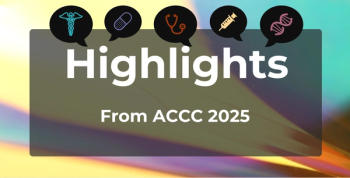
Finding the Golden Opportunity in Becoming a Diabetes e-Educator
The rise of digital health alongside the transformation of reimbursement from fee-for-service to value-based care is allowing patients to fully participate in their own care, according to a leader with one of the top digital health companies in diabetes care.
The rise of digital health alongside the transformation of reimbursement from fee-for-service to value-based care is allowing patients to fully participate in their own care, according to a leader with one of the top digital health companies in diabetes care.
Janice McLeod, MA, RDN, LDN, CDE, FAADE, the director of Clinical Innovation for WellDoc, maker of the BlueStar digital therapeutic for type 2 diabetes (T2D), described the current landscape when asked what being an “e-educator” meant today, as she joined representatives from other digital health companies for a panel at the 2018 annual meeting of the American Association of Diabetes Educators (AADE).
“It is actually this convergence in digital therapeutics, and the rapid transition to value-based care, that together is creating this golden opportunity in healthcare transformation,” McLeod said. “Nowhere is that more needed than in diabetes.”
Like McLeod, fellow panelists Toby Smithson, MS, RDN, LDN, CDE, a diabetes lifestyle expert for Livongo Health, a diabetes management and coaching tool available through employers and health systems, and Rachel Head, RD, CDE, clinical operations manager for One Drop, a direct-to-consumer tool, described their frustration in former traditional roles. Trying to get patients what they needed, or being unable help them away from a hospital or care setting was “maddeningly frustrating,” said Head, who felt “that I was banging my head against the wall.”
Traditional reimbursement limits on diabetes education don’t meet current standards and fall far short of what patients need, the panelists said. Updated standards, also embraced by the American Diabetes Association, reflect the role that technology can play in giving patients coaching when they are making decisions—when it is most needed.
Smithson pointed to research that shows patients’ office visits with physicians don’t allow enough time to go over all the topics they want to discuss. “We need to find other opportunities,” she said.
Moderator Molly McElwee Malloy RN, CDE, clinical services manager for Tandem Diabetes Care, asked the panelists to further compare the effectiveness of digital health and the office visit.
McLeod described how AADE has played a leading role in gathering evidence on this topic, starting with a 2016 working group that led to a 2017 systematic review. “What they found was that these approaches were effective as long as they continued all the critical components,” including:
- The technology goes beyond tracking and visualizing data and is specific to the individual
- The technology keeps the person with diabetes connected to the care team
- The technology fosters 2-way communication
“Diabetes education is not ‘one and done.’ It doesn’t just occur every 3 months,” at an office visit,” McLeod said.
She highlighted the role of DANA, or Diabetes Advanced Network Access, the AADE’s technology and training site that helps members sort through the various categories of technology, from health and wellness apps that are not FDA regulated to digital therapeutics, which are under FDA purview.
Smithson and Head highlighted stories of real-life technology users who were able to do things like bring down their glycated hemoglobin (A1C) by 2% or avoid going on insulin through a combination of oral medications and coaching.
“Behavioral change doesn’t necessarily take place in a 30-minute visit,” said Head.
While digital health can help patients overcome multiple challenges—including the emotional and financial burdens of living with diabetes, geographic access to care, and the burdens on providers—the panelists noted that technology is not without its own barriers. It can hard to build rapport without eye contact. While the gap is closing, some seniors still struggle with it.
And reimbursement remains a challenge, McLeod said. If payers are serious about population health management, they should be serious about technology-enabled solutions, the panelists agreed.
“We need to be putting our thoughts and energy into, ‘How can I improve the health of the population in the most cost-effective way?’” McLeod said.
Newsletter
Stay ahead of policy, cost, and value—subscribe to AJMC for expert insights at the intersection of clinical care and health economics.









































